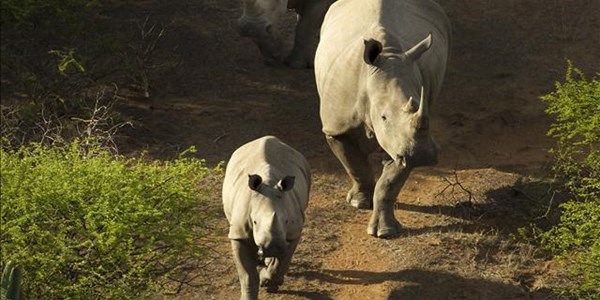Human Interest
CITES: Africa’s plan to save rhinos─── 12:42 Mon, 26 Sep 2016

Johannesburg - Only 11 countries have rhino populations today following a critical period from 1960 to 1990 when more than 100,000 rhinos were decimated through poaching.
Rhino poaching once again spiked between 2006 and 2015 when a further 6,000 rhinos were killed. Poaching has now levelled off but remains a critical issue.
This was the sobering message at Sunday’s conference during the launch of the Rhino Conservation Plan where several African states put forward their points of view in regard to the steps which need to be taken in order to protect one of Africa’s most iconic species.
Eight factors were identified as key components of the conservation plan.
These included protection, investigation and intelligence; biological management; capacity; political support; socio-economic incentives; communication; and finally enabling and supporting policy and a legislative framework as well as innovative research.
Despite the levelled off poaching levels, reducing these levels as an imperative was the general consensus.
Currently, there are 22,000 rhinos in the world, of these 5,002 are black rhinos and the remainder white. Over sixty percent of these are in the hands of states while the rest are on communal or private land.
In regard to the implementation of the preservation of the species, Namibia is one of the few African countries that view engagement of local communities as important. Windhoek asserted its rhino population had grown by 5 percent.
Kenya stated the poaching was still endemic and that Nairobi was aiming to increase its rhino population by 5 percent.
Swaziland pointed out that its leaders and police had thrown their full weight behind the fight to save rhinos.
Mbabane explained that the levelling off of poaching wasn’t necessarily indicative of an improvement in the situation as a drop in poaching was a logical consequence of declining populations.
The kingdom further explained that its rhinos were particularly vulnerable as they were concentrated in small groups and had become tame as a result of tourism.
Botswana expanded on the threat of extinction, pointing out that at one stage the country’s rhino population had dwindled to such small numbers due to rampant poaching that the remaining survivors had to be put under armed protection in special facilities.
Gaborone further stated that rhino conservation was expensive and appealed to the international community for economic support.
ANA














